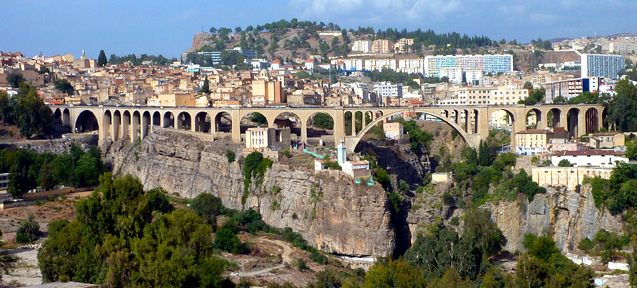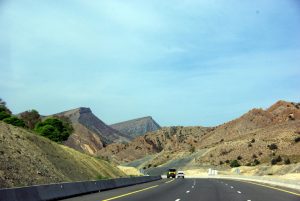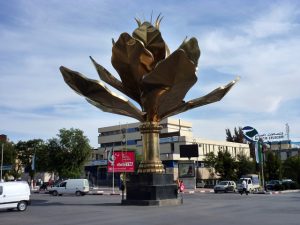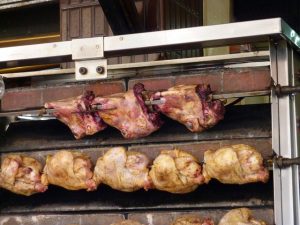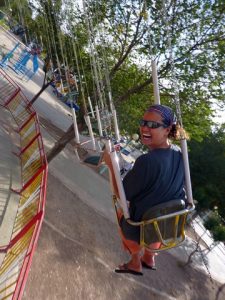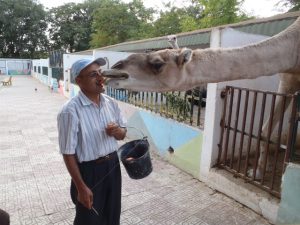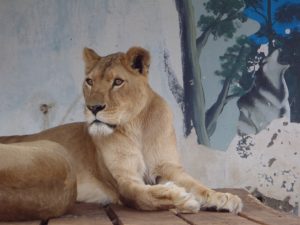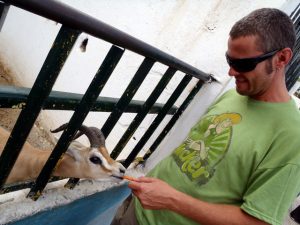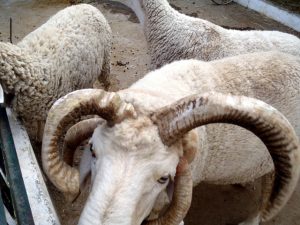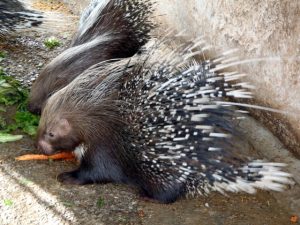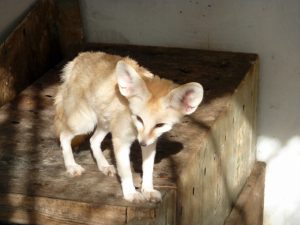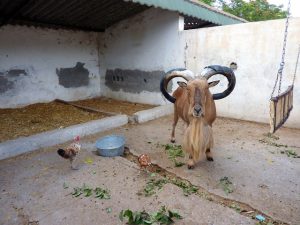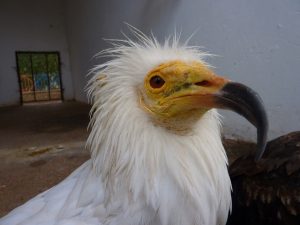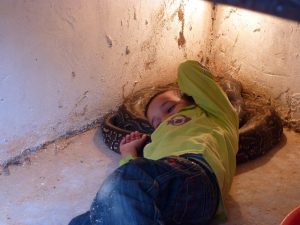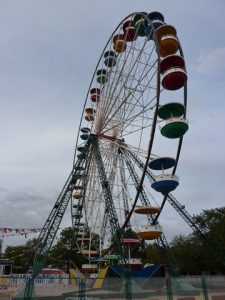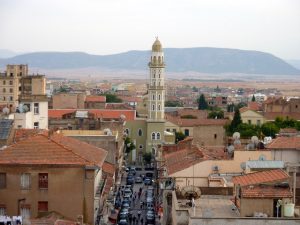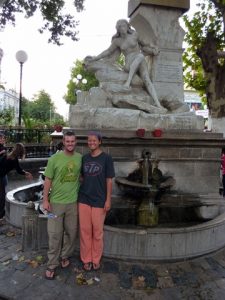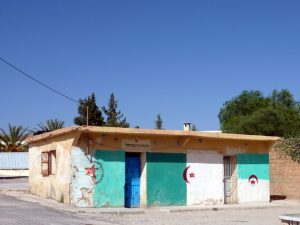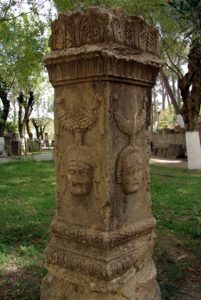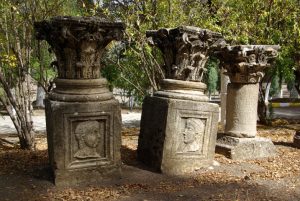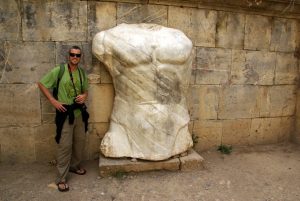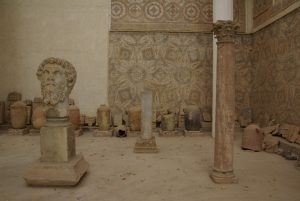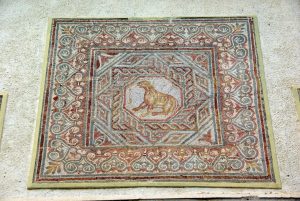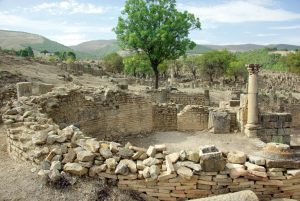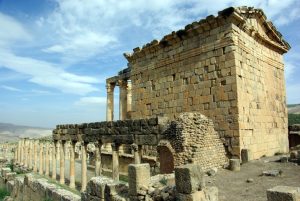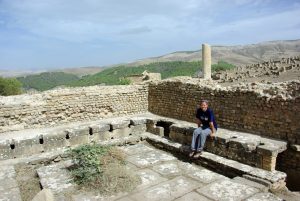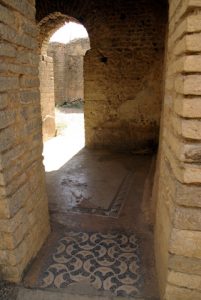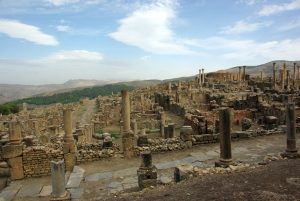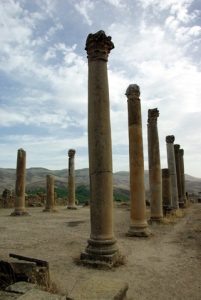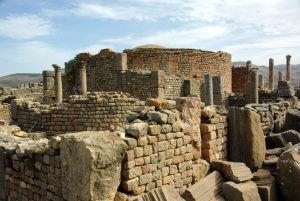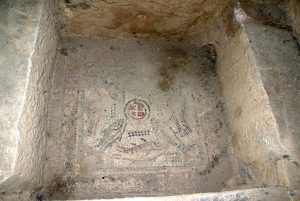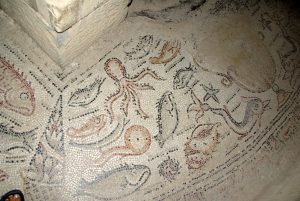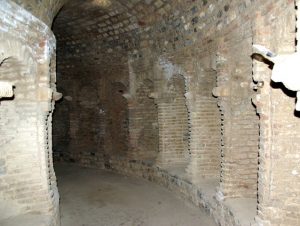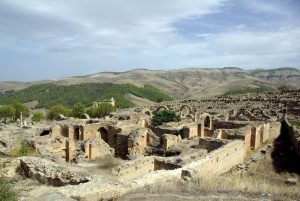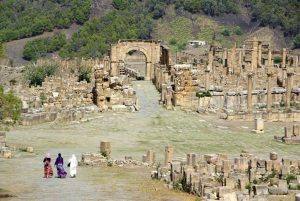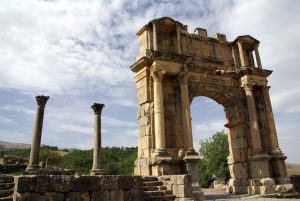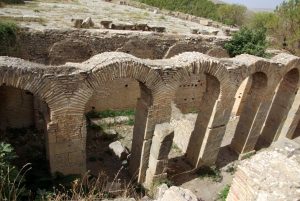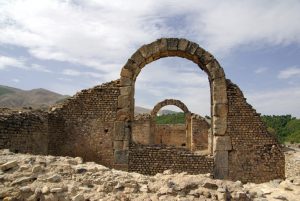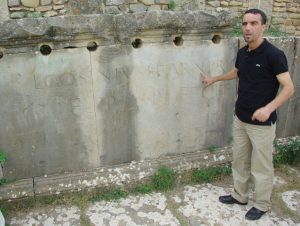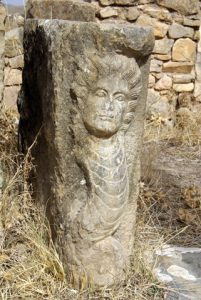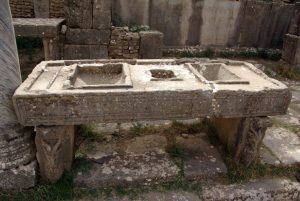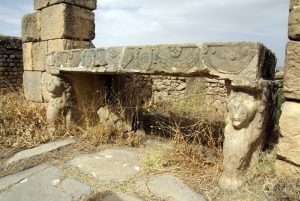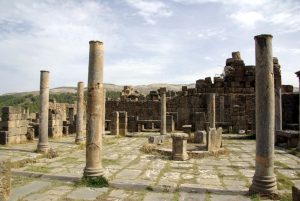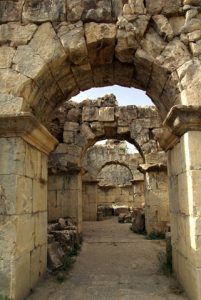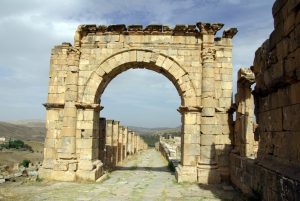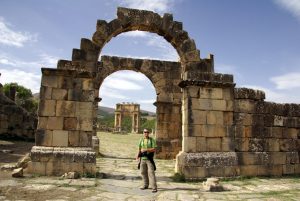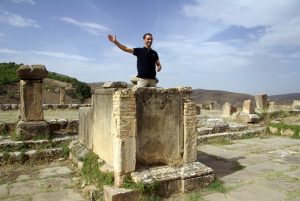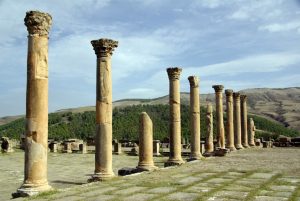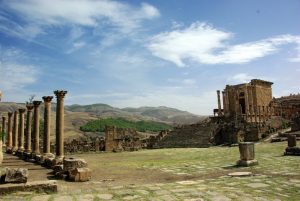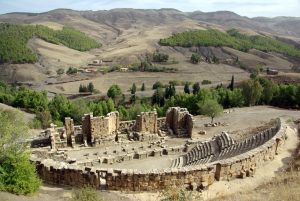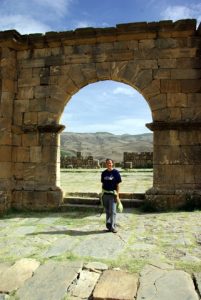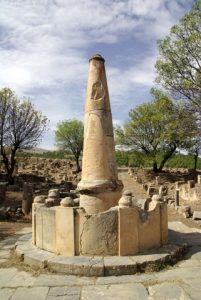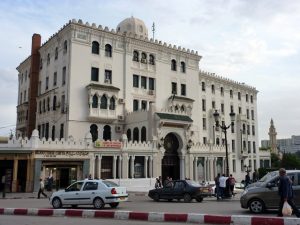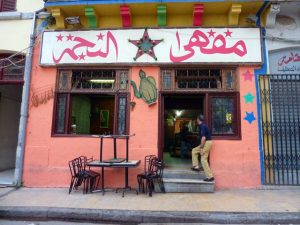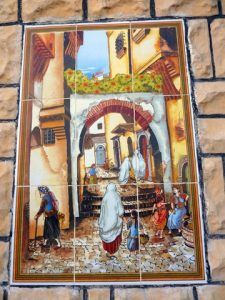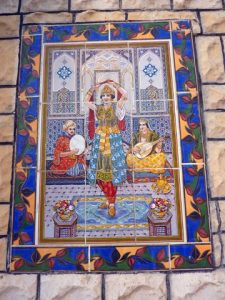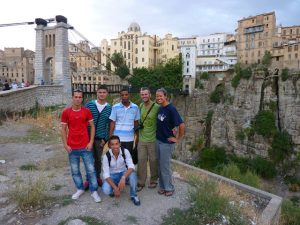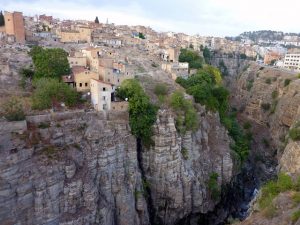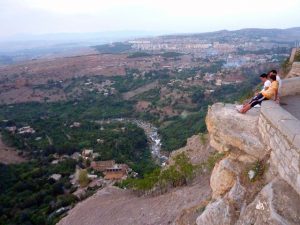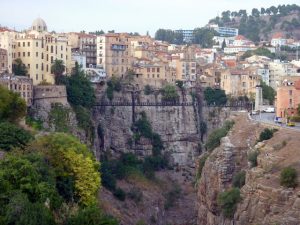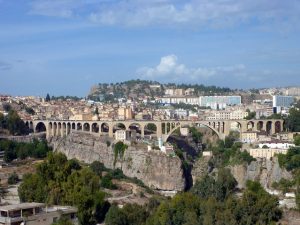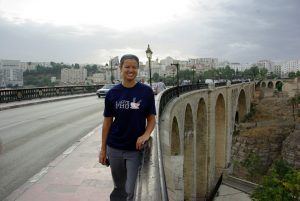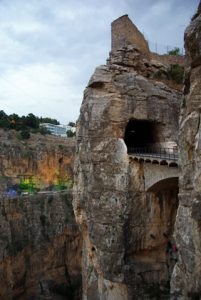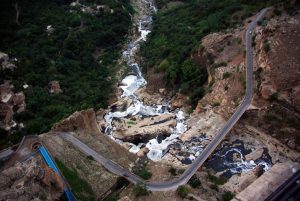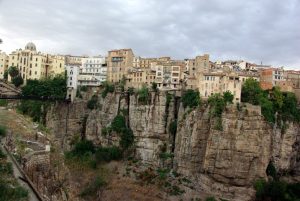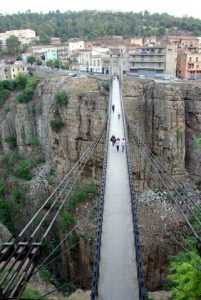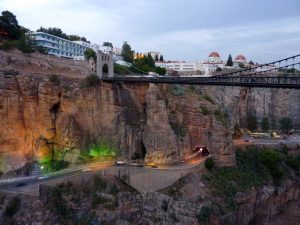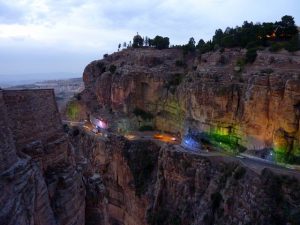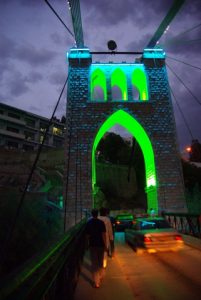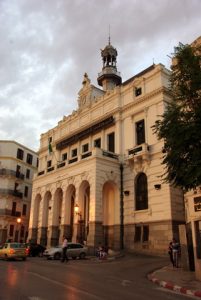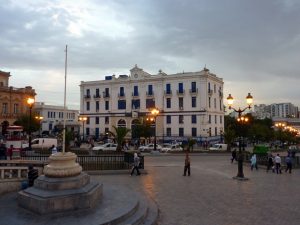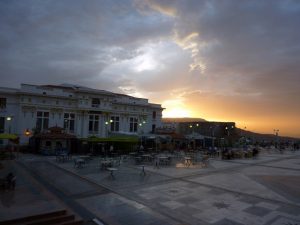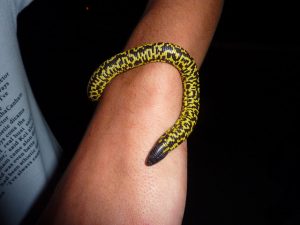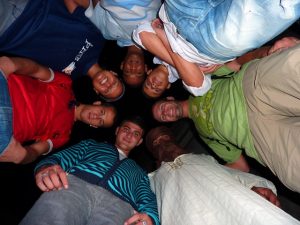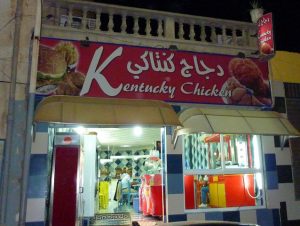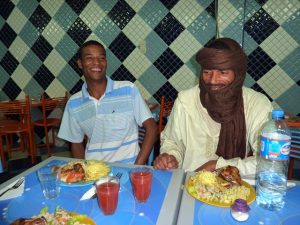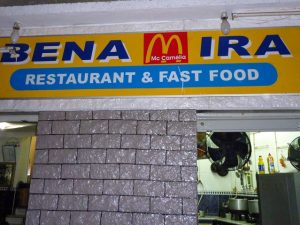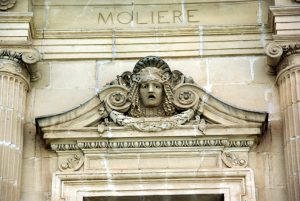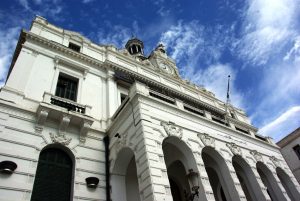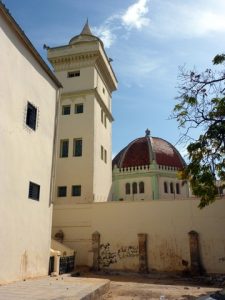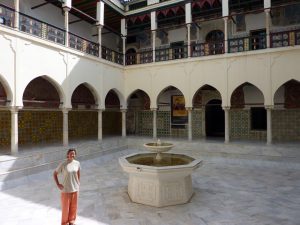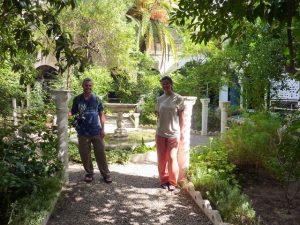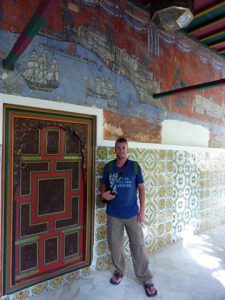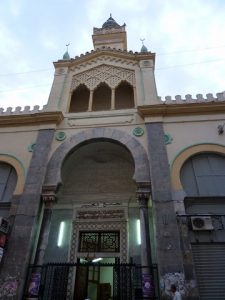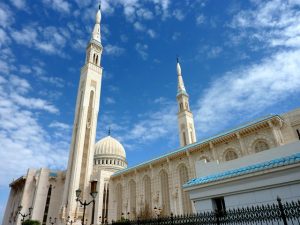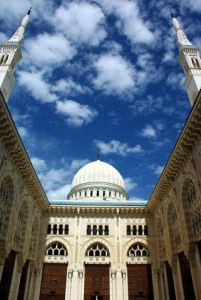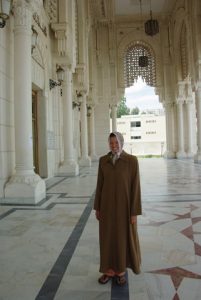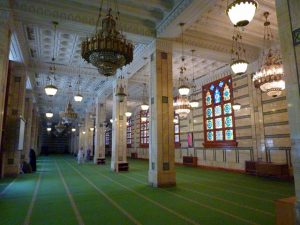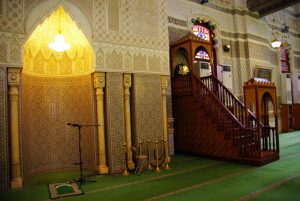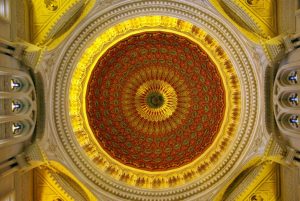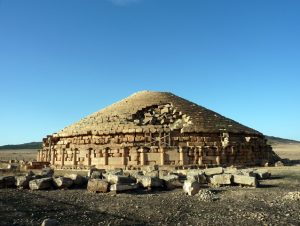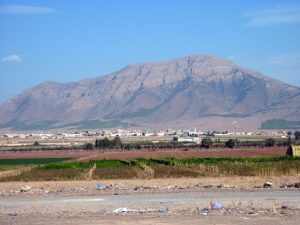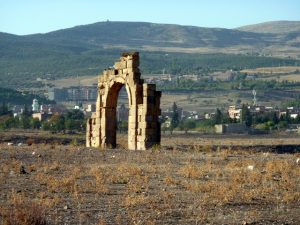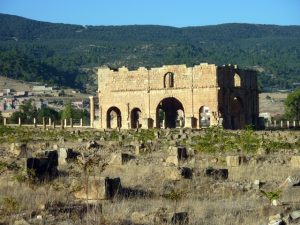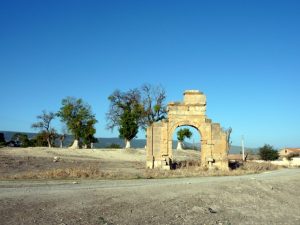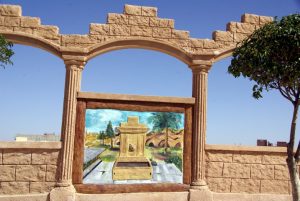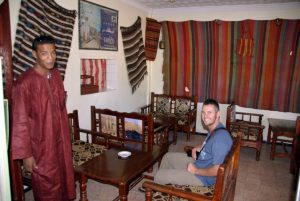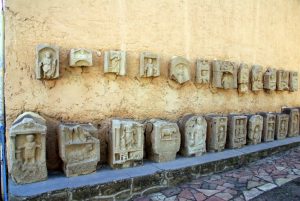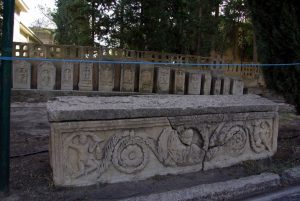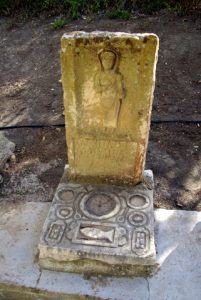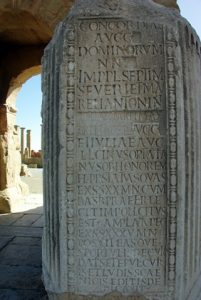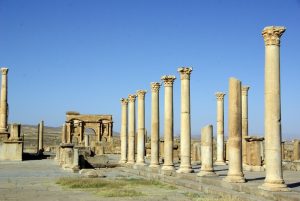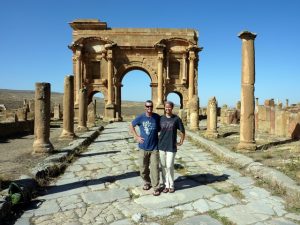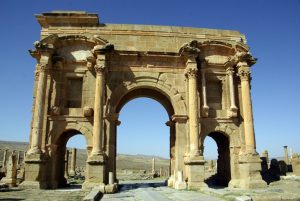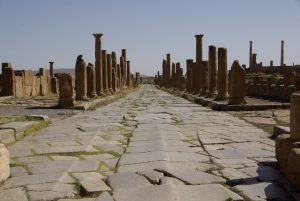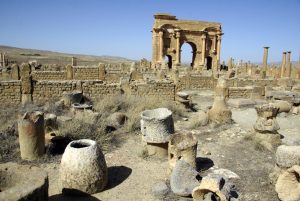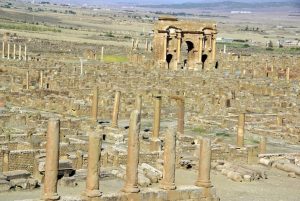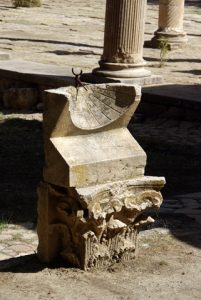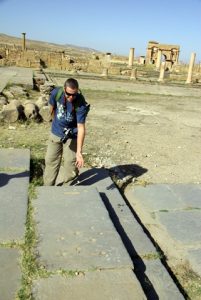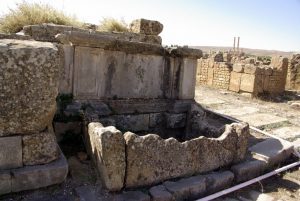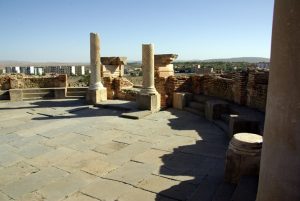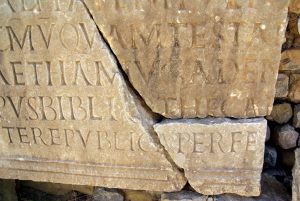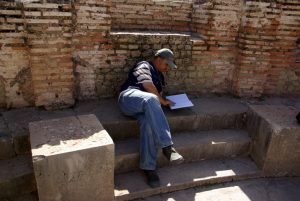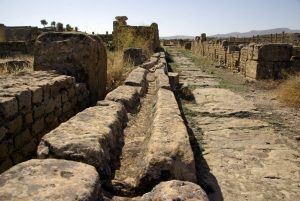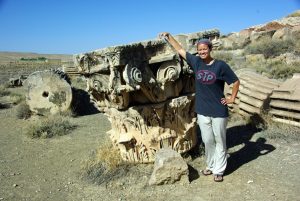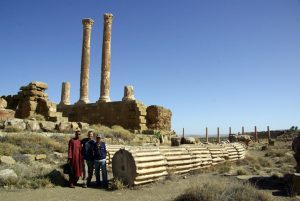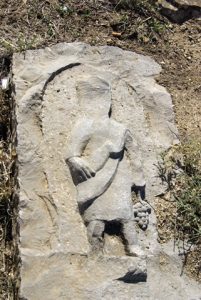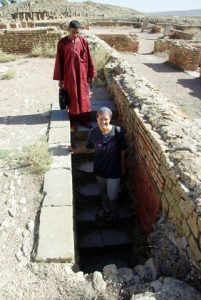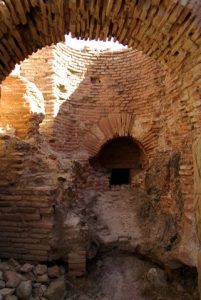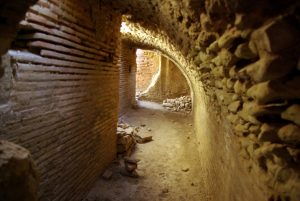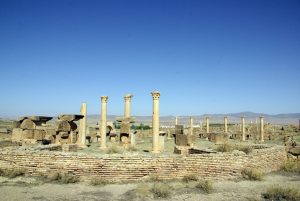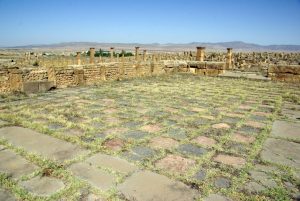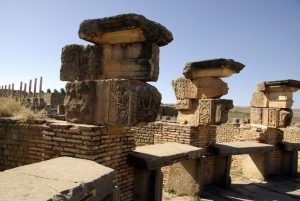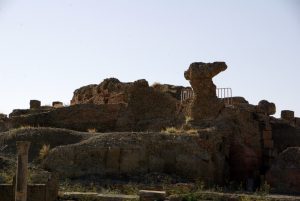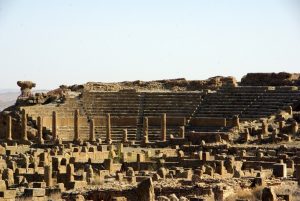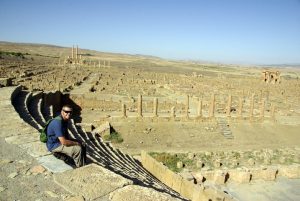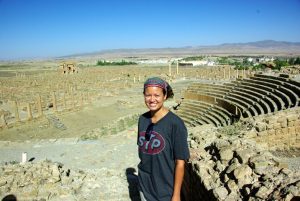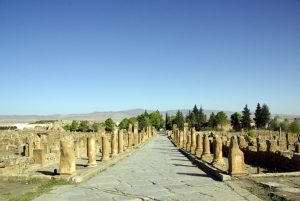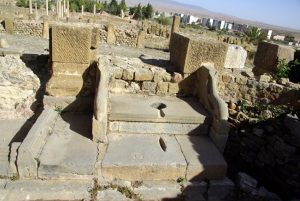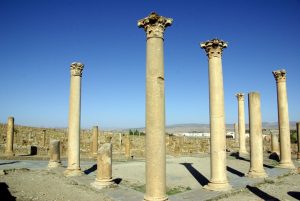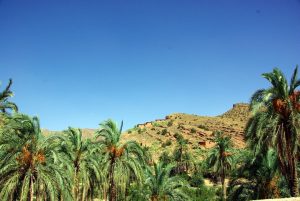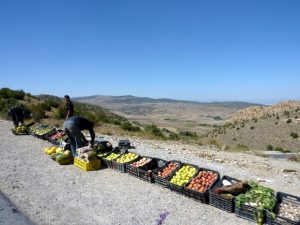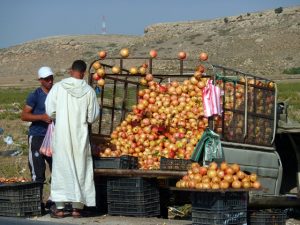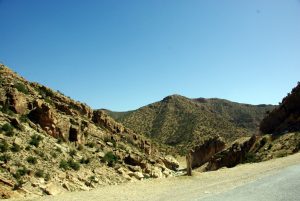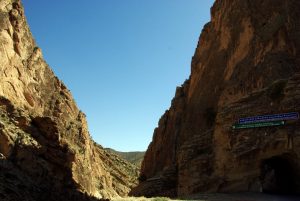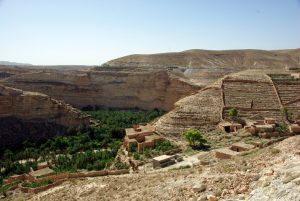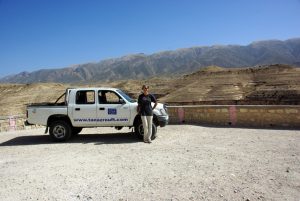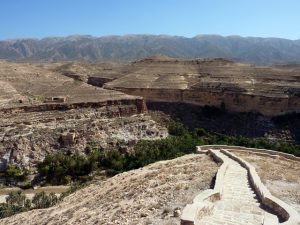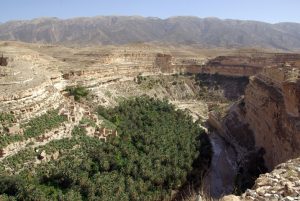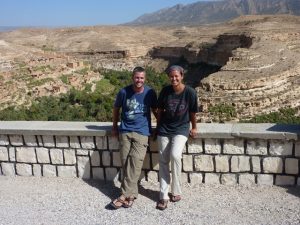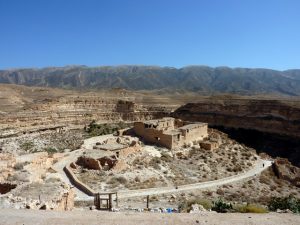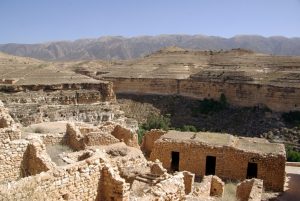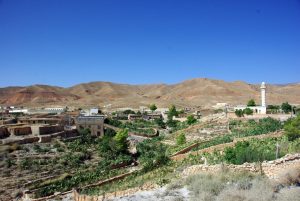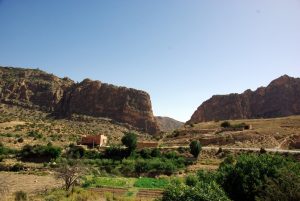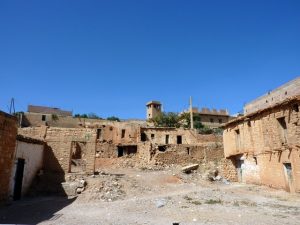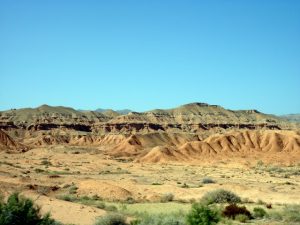After exploring Algiers, it was time to head west towards Setif, a city famous for its somewhat risqué public fountain (Ain Fouara). Here we also enjoyed the city zoo and amusement park, as well as the super friendly service at La Grotte Restaurant (two thumbs up for most original décor). Next, it was time to explore the Roman ruins of Djemila, and it far surpassed our expectations. From the incredible mosaics (the museum mosaics are not to be missed) to the amphitheater set in a gorgeous valley, it still baffles us that we were the only tourists at this world class site. Thanks to a phenomenal local guide (Salim Fligha), we explored every nook and cranny of this well preserved Roman city, and emerged with a greater understanding of how the Romans constructed their cities. Afterwards, it was onward to Constantine, which wins hands down as quite possibly the prettiest city in Algeria. The view from the bridges is an unforgettable highlight, and we met some of the friendliest Algerians here who showed us their beautiful city. After tearing ourselves away from Constantine, we made a brief stop at Madracen where the Tomb of the Numidian Kings can be found. Next, we visited another legendary Roman city, Timgad, which wowed us with its numerous bathhouses, ideally situated amphitheater and Trajan’s Arch. We rounded out this portion of our tour at the ever so scenic Ghoufi Gorge, a tourist circuit with the nickname of the “Grand Canyon of Algeria”.
3 Oct, Sun: We had a brief coffee/tea stop, and pulled into Setif by lunchtime, checking into the comfortable Hotel Reggani where we offloaded our bags and scoped out our second floor room (overlooking Place Rafoui Saad’s statue of Eros). Lunch consisted of sharwarma at the excellent (and brand new, open only for a week) La Grotte Restaurant, which is on the road of restaurant opposite the amusement park. The owners did a fabulous job on the design of the restaurant, sparing no detail. For the first time since we had been in Algeria, we heard fluent English (our waiter lived in London for 5 years), and a small group of Australian-Algerians entered shortly afterwards, and we were happy to have even more people to speak to in English. Salim had visited Setif before, so he knew his way around the compact city. We wandered around for a bit before heading to the amusement park where we rode some ride the flying swings. Salim was not interested in riding, but Yousef grabbed a ticket and joined us. These looked a bit like a kids ride, but it certainly makes you feel queasy after flying around in circles at a fairly high speed for about five minutes. Yousef didn’t feel so good for the remainder of the day. Next we walked over to the artificial lake with paddle boats. It wasn’t very impressive so we asked someone for the way to the nearby zoo. The zookeeper (who hails from M’Zab Valley) was a hoot, relishing the attention from everyone as he fed the animals in a comical way. We were shocked when he entered the lions’ cage and started hugging on the lions, expecting him to get side swiped at any minute. Especially when he stormed their “cave” to chase out the sleeping lions so the crowd could see all five lions at once. He obviously felt comfortable with the lions, but what an unnecessary risk! The other enclosures were a bit sad, but we were able to see the cat-like Fennec Fox and various vultures (the Egyptian Vulture is especially hideously fascinating to see). One young boy begged the zookeeper to let him in with the anaconda, and to our immense surprise, the cage was opened, and the boy rushed in and laid his head down on the snake like it was a pillow! Only in Algeria…I highly doubt that we would ever see that happen in the states!!! Afterwards, we headed back to the amusement park and rode the Ferris wheel, which had really nice views over Setif. Today was a pretty easy day, and our last sight was the picturesque Ain Fouara (the most famous fountain and symbol of Setif). The fountain was sculpted in 1897, and it seemed surreal that locals were lining up to take photos with a naked lady cavorting atop a fountain spewing water that they happily sipped. Especially since Setif seems like a conservative town on the whole! We read that in April 1997, fundamentalists destroyed the statue to the town’s outrage, and she has since been put back together again, looking as good as new (minus her missing nose). We had about two hours to kill before dinner, so we headed towards our hotel for a siesta, and met up with Yousef and Salim around 7 for another go at our favorite restaurant in Setif. Dinner consisted of a steak (grilled to perfection) and we enjoyed our conversation with our friendly waiter, who spoke English, Arabic and French fluently. After bidding our drive and guide goodnight, we crashed for an early morning ride to Djemila tomorrow.
4 Oct, Mon: Got up early to pack and be downstairs for our 7 am departure, but after waiting about 15 minutes in the lobby, we got impatient and noticed that breakfast was being served in an adjacent room. The concierge helpfully suggested that he would watch our bags, signaling that he would shoot anyone that came near them. And we believed him! After breakfast, Robby tried calling Salim on his cell phone, but the call never rang through and now we knew why he had been checking out every single cell phone store while we were in Algiers. About 35 minutes after our agreed upon departure time, Salim and Yousef came sauntering up and wanted to perform preventative maintenance on the vehicle…so we went with the flow and loaded up the truck to wait patiently for everyone to be ready to go. The drive to Djemila was smooth, and despite never having been there before, Salim was able to guide Yousef to the historical site with ease. We were the only visitors, and amazed that at a UNESCO World Heritage Site, the entrance fee (for locals and tourists alike) was only 20 Dirhams each. Finding a W.C. was the first order of business, followed by a visit to the excellent museum (another 20 Dirhams each, and well worth the separate entrance fee). We were able to admire (but no photographs were allowed) some of the most amazing Roman mosaics that either of us has ever seen. The exquisite detail blew us away, and the sheer amount of mosaics that were able to be preserved in the museum was jaw dropping. A friendly site guide, Salim Fligha, who speaks impeccable Arabic and French and passable English gave us excellent explanations of the site, referring to the scale model to show us the route he intended to take us on. Lucky for us, he also had possession of the Baptistery’s (located in the Christian Quarter) entrance key, which he unlocked for us so that we could admire (and photograph) the well preserved mosaics located beneath the dome. Our next stop was the stunningly beautiful theater, which can seat up to 3000 spectators, who were divided into three social sections (the prime seats for the senators or nobility, Roman citizens in the next tier, and everyone else in the nose bleed seats). Afterwards, we headed down to the Temple of the Severan Family (Le temple Septimien, named after Emperor Septimus Severus), and learned that the massive marble heads of the emperor and his wife, Julia Domna, on display at the museum, were excavated from this family temple. The Old Forum was our next stop, which is a large 2000 square meter area flanked by the Temple of Jupiter and the Capitol (to the north), the curia, a basilica that functioned as the town hall (to the north east), the Temple of Venus (to the south), the Judiciary Basilica (to the west) and the municipal prison and the market of Cosinius (to the north west). Salim demonstrated where the Emperor would have addressed the crowd from in the forum (behind an ornate marble “podium”), and we examined the animal carvings on the sacrificial alter in the Temple of Jupiter. The diminutive Market of Cosinius was probably our favorite section of Djemila, with its stone tables where merchants would lay down their merchandise for sale (many with intricately carved legs), and its unique weights and measures carved stone (very advanced for its time), and its overall quaint atmosphere. We spent some time admiring this section, before checking out the nearby prison, built under the market itself. Walking back up the cardo maximus, we passed by a house marked by a phallus symbol. Salim explained that it either stood for one of two things, a brothel (which is unlikely due to its close proximity to the Place des Severes, or a symbol to bring the family fertility. Passing by the Arch of Caracalla, we counted our blessings that the arch was never sent to Paris in 1839 as originally intended by the Duc d’Orleans (he died three years after dismantling the arch whereupon the original idea was forsaken), and it was reconstructed in 1922, where it now stands today. A large phallic looking fountain was our next stop, and Salim showed us how good old fashioned water pressure created a spouting fountain. Unfortunately, the pipes used to create the fountain were lead, and it didn’t take the local population long to realize they were becoming victims of lead poisoning. The Grand Baths rounded out our visit, and Salim showcased the gymnasium, cold, hot, tepid, sauna, solarium and water cisterns housing the city’s water supply before inviting us to dine with him for lunch. Since it was almost noon, we accepted and enjoyed a tasty steak and chickpea dish before bidding Salim farewell. While we normally don’t enjoy a guided tour of ruins, we thought Salim Fligha was fantastic, and would strongly encourage anyone visiting the site of Djemila to seek him out, if only to glean more about this lovely place through his extensive knowledge. It didn’t take long to reach Constantine, our next destination on our journey. Since neither Salim nor Yousef had ever visited this city before, we stopped to ask the friendly inhabitants for directions to the recommended hotels (first for gorgeous Hotel Cirta which unfortunately for us was fully booked, followed by the Hotel Panorama, also fully booked). It was looking dismal as we considered our limited hotel options, but the Hotel Des Princes on 29 Rue Abane Ramdane came to the rescue, offering a clean room with hot water and air conditioning at an affordable price. Plus, its location was great, only a few minutes walk away from Place des Martyrs and the Cirta Museum. After scoping out some potential sites to check out in the afternoon, we headed down to the lobby to await Salim and Yousef, who had to go park the truck and get settled in to their own room. We had forgotten to factor in prayer time. Once that was complete, we all set out to the Cirta Museum. Greeting us at the staircase to the museum were three boisterous teenage boys wanting to practice their English. We greeted them briefly, and entered the museum only to find out that we had missed its opening hours by mere minutes (it closes at 1630 daily). On our way back out of the museum, the boys were helpful in pointing out highlights of their city and eventually, they even offered to show us around town! We immediately liked Yousef (a 17 year old whose English was self-taught), Omar and Mahmat as they led us past the Hotel Cirta (a beautiful, white Ottoman palace style hotel dominating Place des Martyrs), towards the first of the city’s bridges, the Sidi Rached Bridge. The view from the bridge down into the gorge was spectacular. A mausoleum under the bridge stood out, and we spent some time here admiring the vistas and snapping away to our heart’s content. As we walked farther across the bridge, the views of the gorge became more and more impressive. We made our way around the corner and prepared to tackle another bridge. The second bridge was even more amazing, a pedestrian only suspension bridge named Mellah Slimane or Le Passerelle Perreguax, which swayed slightly as we crossed it. Even though both of our guide books had advised us that we would be blown away by the views, nothing prepared us for how beautiful the city of Constantine is, especially seen from its famous bridges. The guide books seem to focus on the beauty of the bridges, but the actual beauty is found looking down the dramatic gorge with the city perched up on along its upper edges. Yousef pointed out a cable car in the distance that crosses the gorge between the hospital area and the city center. After crossing the suspension bridge, we had the option of taking the lift or getting a work-out from climbing a few flights of stairs. We opted for the latter, which actually was good because there were a couple of nice view points from the stairwell for taking photos. Once we made it to street level of the city, we were greeted by a big mosque just next to the exit of the stairs. Yousef asked us if we were interested in seeing another bridge but said we should hurry as the sun was setting soon and it would be getting dark. Our teenage guides were doing a fine job showing us around, and we thoroughly enjoyed their company as well as helping Yousef practice his English. For his English to be self taught, he obviously is a gifted boy who has a talent for languages. Robby (not much of a sports fan) started making small talk about football just to help Yousef further practice his English. Little did Robby know that Yousef is a huge football fan and his confidence in the English language quickly increased as he discussed the topic. We made our way back through the Place des Martyrs, up B’D de L’Abme past the Town Hall and along the huge drop-off, which gives great views out over the countryside. There were several small tunnels etched out of the stone for vehicle traffic and lookout points built along the way for pedestrians. After the tunnels the road becomes Rue Sidi Abdul Bouhroum. Views of the gorge below just continued to be more amazing. As we snapped more photos we came upon the Sidi M’Cid Bridge and a view of the Monument of the Dead, built on a high point across the gorge. As we started to walk across Sidi M’Cid, colorful lights flashed to action and turned the bridge into an even more photogenic sight. A friendly teenage boy ran up to us to show us his “pet”, a strange looking creature that appears to be a cross between a worm and a snake. It was black with yellow spots and just big enough to almost fully wrap itself around the boy’s wrist. It was getting late, so the boys escorted us to a road full of restaurants, but refused our offer for dinner, stating that their parents would beat them if they skipped dinner at home. Yousef, an artist in the making, gave us a goodbye gift (a sketch of his favorite TV show, “Prison Break”’s lead character’s tattoos and an Algerian 10 dinar coin), and we gave him a US $1 bill as a small memento of his friends from the US. Dinner was at “Kentucky Chicken”, and we got our fill of chicken. Thankfully, Hotel Des Princes had hot water, so after a warm shower, neither of us had problems falling sound asleep.
5 Oct, Tues: After breakfast, we started our day tour with the Museum of Cirta. It was a two story building packed full of interesting artifacts and art. There are several interesting paintings of Constantine’s Rhumel Gorge. Of particular interest to us was the “Beauty of Djemila” statue, which was a fully intact white marble statue of a lady, which was found during excavations at Djemila according to our site guide. Leaving the museum, we headed down the hill to the covered market hoping to get a few photos of the butchers and fruit/veggie venders. Unfortunately, we asked several vendors if it was OK to take photos, but none allowed us. We even bought a kilo of dates from one of the vendors and he still would not allow a photo. Since there were no photos allowed at the market, we made our way to the famed theater as it was supposed to be one of the most beautiful buildings left by the French. The inside is said to be spectacular. To our disappointment it was closed and there were no visible signs indicating opening hours. The windows and doors even had security bars over them making it impossible to get close enough to sneak a peek inside. Yesterday when we went to the Sidi Rachid Bridge, we noticed a building being restored in an old style and Salim asked if it was possible to enter. The workers said to try in the morning. So, we stopped by and a young female architect in charge of the project allowed us to enter for a few quick look around. The building was formerly a single house with a typical central courtyard. It has been renovated and modified into 4 apartments. There was also another building connecting to this one that was undergoing the same restoration. It was nice to see efforts to get the city a bit of a face lift and still maintain the traditional look. We walked back across to the center of town to the Mosque Souk El Ghozal and found it a little difficult to take good photos as there are other building and trees surrounding it. The mosque was converted to a church by the French, but is currently a mosque again. Next door is the Palace of Ahmed Bey. Both of our guide books mentioned that it was under restoration and may be closed as has been the case with many other sites that the same was written. Lucky for us, it opened to the public earlier this year and they even had a local English speaking guide that gave us a private tour of the palace. Our guide’s name was Lamia and she had a great command of the English language. The palace was huge and they have done a great job with the restoration. Unfortunately for Ahmed Bey, he was only able to use the palace for 2 years before the French arrived and took it from him. Before saying farewell to Constantine, we made one last stop at the Amir Abdel Kader Mosque. This is one of the world’s largest mosques and the largest in Algeria. We just caught the end of prayer time so Salim & Yousef went in for prayer while we waited outside. Non Muslim visitors are not allowed to enter during prayer times. We walked around the exterior of the mosque to get a few photos and take in exactly how massive this structure is. After only about five minutes Salim came and told us that we could come in. They have a reception with guides that show visitors around and give some information about the mosque. The guide gave Becky a proper robe to wear and we took a few photos of her new attire. The inside of the mosque is very decorative and spacious. We were happy that the guide also allowed us to take photos inside. The dome is completely painted with all the names of Allah. We finished our tour and took a few photos of Salim outside so we could email them to him as he was quite happy that he visited. On the way to Medracen Tomb, we stopped at a small local road side diner and had chicken & fries for lunch. After arriving at the tomb, we found the gate to be locked so Salim and Yousef sat and relaxed by the truck while we made our way around the fence to take a few photos. When we came back towards the parking area, there were three local guys from Kabylie that were excited to talk to foreigners. One of the three knew a little English and was struggling to practice with us and Salim assisted with translating when he had too much trouble. The guys were trying to tell us a little history about the tomb with a bit of English, French, Arabic and lots of laughing. After talking for a while we took some photos together and gave them our card so they could check out our website. We drove onwards to Batna and started our search for a hotel. It seemed that all the hotels in city were full. We even had local guys driving in front of us to show us the way to hotels. Finally we stopped at a roundabout and asked a police if he knew of another hotel and he recommended the Hotel Guetaffi. Lucky for us, they did have a room, but at a steep 4000 dinar price tag. Salim said they had to look for another hotel for them as this one was too expensive. Neither of us had an appetite, so we told Salim that we were tired and not hungry so dinner was not necessary. We wished him good luck in his hotel search.
6 Oct, Wed: Woke up and had breakfast in time to meet the guys at 0730. We expected up to an hour drive to Timgad, but there was no traffic and the roads were good so we arrived slightly earlier. Lonely Planet indicated the opening time to 0830, but when we arrived, we found the opening time posted as 0900. So, we sat and had a cup of local tea at a café just in front of the gate while we waited for the gate to be unlocked. Entrance fee to the site is 20 dinar. As our guide books mentioned, the museum is still closed due to a lack of funding. So, it was really unfortunate that we were unable to see the 200+ mosaics said to be on display there. We were only able to take photos of some interesting carved stonework and marble columns around the outside of the building. This site is said to be one of Algeria’s most popular tourist destinations for locals and foreigners. We found it very interesting that there were not enough funds to keep the museum open. They could easily increase the entrance fee to something like 200 dinar and it would still be a very reasonable price. We started our walk along the cardo maximus reading our guide book description of the building. Apparently is it typically difficult to find an English speaking guide on-site to tell you about everything. When we reached the forum, Salim said that a security guard told him we could take a photo of the amphitheatre, but we were not allowed to ascend it. Becky asked where was the best place to take a photo as the sun was directly behind it and nearly impossible to get more than a silhouette. Lucky for us, the security guard (Hamid) escorted us up through the amphitheatre so we could take that perfect photo. He informed us that he used to be a local guide and then began to show and explain everything in perfect English as if we had hired him for the grand tour. While our books were somewhat descriptive, Hamid gave us a clear understanding of the history, layout of the city, significant items and had answers for all of our questions. The site were once completely buried, but the French did an excellent job of excavating and renovating enough to give you a good feel of what the city was like during its heyday. After making a full loop of the site, we could tell that Hamid was an excellent guide that enjoyed showing people around. We wondered why his is now a security guard instead of a guide. Maybe, the lack of funding for the site meant that he had to change jobs. With this being one of the top tourist sites, we were surprised to have the whole site to ourselves. Next we drove through Ghoufi for a view of the “Grand Canyon of Algeria. Interestingly, there was no mention of this village in the Lonely Planet. There is a primary road from Batna to Biskra, but the smaller, secondary route is way more scenic, taking us through eye-catching landscape from Timgad to Biskra. Along the way, there are thousands of picturesque date palms lining the bottom of the valley with the weathered mountains creating a contrasting backdrop. When we reached the village of Ghoufi, there was a turn off for the tourist circuit. This route is only about two or three miles long and took us right along the site of the gorge so that we could get some great views of the dramatic cliffs with old mud brick buildings perched atop. There are several viewpoints constructed and a couple of sets of stairs leading down to the river bed. But, around midday it is really hot and exhausting to attempt those stairs. We walked down part way at our first stop and opted to enjoy the views from the top at the stops there after. Once we were done snapping photos we headed out and looked for a place to have lunch. Along the way, we were stopped at a military check point, asked for our passports and thoroughly questioned about our route, why we didn’t have an escort and various other things we were not able to make out as it was all in Arabic. After about 20 minutes of discussion and the soldier gathering all of our details, we were allowed to pass. It seemed that we should have taken the primary route from Batna to Biskra as Ghoufi was not listed on our itinerary and we seemed to be far from any place listed on it. But, he let us continue and we stopped at the next village for a late lunch. We were going to have chicken again until we saw the lamb chops that Salim ordered and then quickly changed our order. After having chicken several times over the past few days, the lamb chops were an instant delight. Salim also suggested that we try the local bean soup dish, which has a tomato base with large brown beans having a tough skin similar to what we have eaten in Ecuador.
